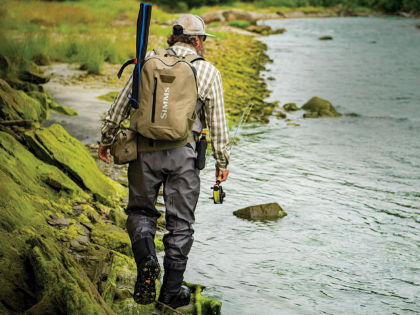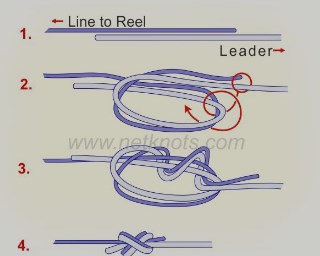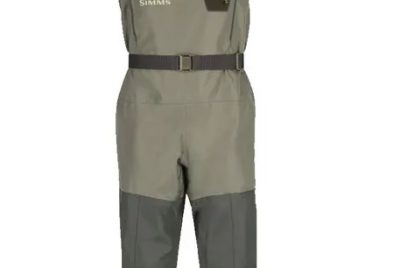Fly Fishing Backpack
As an enthusiastic fly fisher, I know firsthand the importance of having a reliable and well-organized backpack for my fishing excursions. A good fly fishing backpack not only carries your gear but also keeps it easily accessible, allowing you to focus on what truly matters – the thrill of fishing. In this comprehensive guide, I will walk you through everything you need to know about selecting the perfect backpack to suit your needs and preferences.
Introduction
A fly fishing backpack is more than just a storage solution; it is an essential companion that enhances your fishing experience. A well-designed backpack keeps your fishing gear organized, easily accessible, and secure, allowing you to focus on the water and your passion for fly fishing.
Understanding the Features and Benefits of a Good Fishing Backpack
A good fishing backpack comes with an array of features that cater to anglers’ specific needs. From specialized compartments for fishing gear to padded straps for comfort during long trips, these backpacks are designed to make your fishing adventures more enjoyable and efficient.
Types of Fly Fishing Backpacks and Their Specific Uses
Fly fishing backpacks come in various styles, each tailored to different fishing preferences and situations. Sling packs provide quick access to gear, chest packs keep essentials within arm’s reach, and traditional backpacks offer larger storage capacity. Understanding the distinctions will help you select the most suitable style for your fishing style.
Selecting the Right Fly Fishing Backpack
Choosing the right fly fishing backpack begins with considering its size and capacity. Assess the amount of gear you typically carry and choose a backpack with sufficient space to accommodate it comfortably. Additionally, evaluate the backpack’s design and organization of compartments to ensure that essential items are easily reachable.
Fly Fishing Backpack Materials and Durability
The materials used in a fly fishing backpack impact its durability and performance. Common materials include rugged nylon, water-resistant fabrics, and reinforced stitching. A backpack built to withstand the elements ensures your gear stays safe and dry during your fishing adventures.
Ergonomics and Support Features
During extended fishing trips, a comfortable backpack becomes paramount. Look for padded straps and back support to alleviate strain and distribute weight evenly. Backpacks with breathable and moisture-wicking properties help keep you cool and dry on hot days.
Storage and Compartment Options
Efficient storage is crucial for staying organized on the water. Look for specialized pockets and compartments designed to accommodate fishing gear, such as fly boxes, leaders, tippets, and tools. Additionally, consider backpacks with built-in hydration systems or water bottle holders to keep you hydrated during long hours of fishing.
Considerations for Fly Tying and Tools
For fly tiers, having a backpack with integrated fly tying stations and tool storage is a game-changer. The ability to access and organize your tying materials and tools during fishing expeditions enhances your fly fishing experience significantly.
Fishing Backpack Styles and Designs
Fly fishing backpacks come in various styles, each offering unique advantages. Sling packs offer easy access to gear without removing the pack, chest packs keep essentials within reach, and traditional backpacks provide ample storage space. Weigh the pros and cons of each style to find the one that best fits your fishing needs.
Organizational Tips and Tricks
An organized backpack makes fishing more enjoyable and efficient. Pack your gear in a logical order, placing frequently used items within easy reach. Keep your backpack tidy and avoid overloading it with unnecessary items.
Fly Fishing Backpack Maintenance
Proper maintenance ensures your fly fishing backpack’s longevity and optimal performance. Regularly clean your backpack to remove dirt and debris, and inspect it for any signs of wear or damage. Minor repairs, such as fixing loose stitching, can extend the life of your backpack.
Personalizing Your Fishing Backpack
Adding a personal touch to your fishing gear can be rewarding. Consider customizing your backpack with patches, decals, or accessories that reflect your personality and passion for fly fishing.
The Advantages of a Dedicated Fly Fishing Backpack
Using a dedicated fly fishing backpack streamlines your fishing experience. With a designated pack for your gear, you avoid the inconvenience of carrying multiple bags and ensure that everything you need is easily accessible.
Fly Fishing Backpack Reviews and Recommendations
To make an informed decision, read reviews and recommendations from experienced anglers. Top-rated fly fishing backpack brands and models often receive positive feedback for their functionality, durability, and design.
Tips for Packing Light and Efficiently
Packing light while ensuring you have all the essentials can make your fishing trips more enjoyable. Identify the necessary items for a day trip or longer excursions, and prioritize multi-functional gear.
Budget-Friendly Fly Fishing Backpack Options
You don’t need to break the bank to find a quality backpack. Several value-for-money options offer excellent features and performance without compromising on quality.
Eco-Friendly Fly Fishing Backpacks
Supporting eco-friendly fishing gear choices contributes to preserving our environment for future generations. Look for backpacks made from sustainable materials and designs that prioritize environmental conservation.
Conclusion
A well-chosen fly fishing backpack is a vital investment for any angler. By understanding the features, materials, and benefits of different backpack options, you can select the perfect companion for your fishing adventures. Keep your gear organized, accessible, and secure, allowing you to focus on what truly matters – enjoying the serenity and thrill of fly fishing.
FAQs
1.Can I use a regular backpack for fly fishing?
While a regular backpack can hold fishing gear, it may lack the specialized features and organization designed for anglers. A dedicated backpack offers added convenience and protection for your fishing gear.
2.What size of fishing backpack should I choose?
The size of your backpack depends on the amount of gear you carry and the duration of your fishing trips. Consider a backpack with a capacity that comfortably accommodates your essentials without being too heavy or bulky.
3.Are sling packs better than traditional backpacks for fly fishing?
The choice between sling packs and traditional backpacks depends on your fishing preferences and the amount of gear you typically carry. Sling packs provide quick access to gear, while traditional backpacks offer more storage space.
4.What is the best material for a fly fishing backpack?
Durable and water-resistant materials, such as nylon and polyester, are commonly used for fly fishing backpacks. Choose a material that can withstand various weather conditions and protect your gear from moisture.
5.Can I carry fly tying materials in my backpack?
Many fly fishing backpacks offer specialized compartments and stations for fly tying materials and tools. Look for a backpack with dedicated fly tying features to keep your materials organized and easily accessible on the water.




